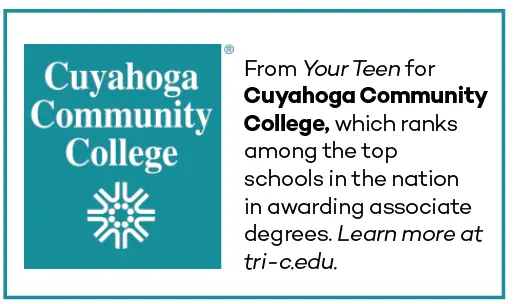Last year, Cyanna S. received offers to attend a handful of public and private four-year colleges. In her financial aid packages, she noticed scholarship offers alongside information on available loans to cover the additional costs. During a difficult conversation with her parents, she realized that attending her first-choice private college meant accumulating more than $50,000 of debt in two years.
“My mom has always been adamant that she doesn’t want me to have debt after college. I never really understood how debt could impact my life until I moved out on my own,” says Cyanna. Ultimately, Cyanna realized it made more sense to go to a community college and then transfer to a four-year college to study nursing.
“Since starting community college, I’ve matured more. I’ve made friends and connections, and, best of all, I haven’t had to take on any debt,” she adds.
How to Avoid College Debt
Honest dialogue is key
While it may seem early, the teen years are the time for families to begin discussing how to avoid college debt. Often it makes sense to play the long game and choose the institution that can give you a great education with the least amount of debt, especially if your student is planning on further education after an undergraduate degree.
“Talking about possible debt after college with your student is a difficult conversation,” says Nancy Berk, Ph.D., a psychologist and author of College Bound and Gagged: How to Help Your Kid Get Into a Great College Without Losing Your Savings, Your Relationship, or Your Mind.
“Over the years, I’ve witnessed that some parents feel shameful about not being able to afford the full cost of college,” says Berk. “But most people can’t easily afford to cover these costs.” For the 2019-20 school year, the average cost of tuition and fees for private colleges was $41,426. The average is $11,260 for students at public colleges, and $27,120 for out-of-state students at state schools, according to a U.S. News & World Report annual survey.
Consider community college
Parents might not realize this, but community colleges are high-quality, low-cost opportunities, says Megan O’Bryan, vice president of development at Cuyahoga Community College (Tri-C) in Ohio. O’Bryan is also president of the Cuyahoga Community College Foundation.
“The quality of the programs we offer here, as well as the facilities, are on par with the four-year institutions in our community—at a fraction of the price,” says O’Bryan, who notes that Tri-C has the lowest tuition per credit hour in the state of Ohio: about $114 dollars per credit hour.

One Tri-C scholarship opportunity is the Honors Program Fellowship for students with a 3.5 or higher GPA who will be first-time, full-time college students upon enrollment. During the last academic year, Tri-C awarded this scholarship to 66 students. One of those students is currently enrolled in Tri-C’s nationally recognized Jazz Studies program.
“His goal is to transfer to the Berklee College of Music after his two years at Tri-C. Since our Jazz Studies program is aligned with Berklee’s program, he’ll be able to seamlessly transfer,” says O’Bryan.
Berk offers this advice for families to tuck away as they ponder the college options. “I’ve learned that a higher price tag doesn’t guarantee happiness in anything in life, whether it’s a new outfit or a college.”
Consider Online Colleges
Online colleges can offer a flexible and cost-effective alternative for students seeking quality higher education while avoiding excessive debt. Many reputable institutions provide robust online programs, complete with dedicated support services and opportunities for virtual internships, making it easier to balance education with work or family commitments.
For example, if you’re interested in pursuing a career in mental health, you might consider enrolling in an online program that awards a bachelor’s degree in counseling. These programs often feature innovative curriculums, affordable tuition rates, and extensive financial aid options that can significantly reduce your out-of-pocket expenses.
By thoroughly researching online colleges, you can compare program offerings, accreditation status, and graduate outcomes to determine the best fit for your academic and career goals. This due diligence is key to finding an institution that delivers both quality education and long-term financial benefits.





